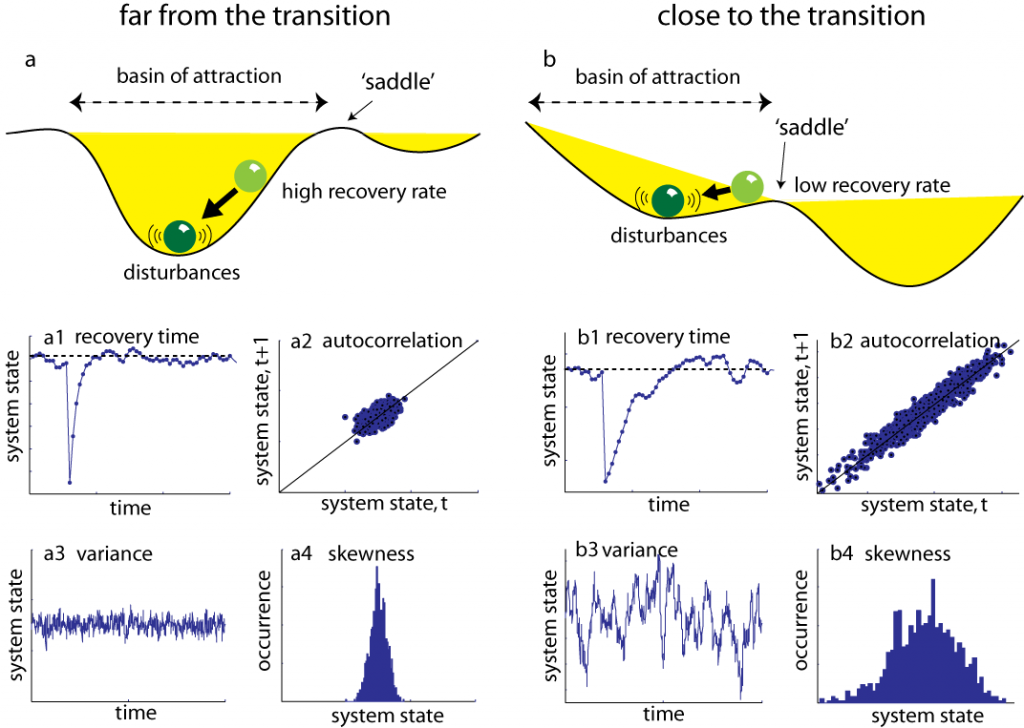Early warning signals are simple properties that change in characteristic ways prior to a critical transition.
A. Early warning signals can be direct consequences of critical slowing down:
- Slow recovery from perturbations: The recovery rate after small perturbations decreases when the system is close to the bifurcation (panels a1,b1).
- Increasing autocorrelation: The state of the system becomes more and more like its past state (panels a2,b2). The highly correlated time series close to the transition can be quantified as an increase in autocorrelation.
- Increasing variance: The accumulating impact of the non-decaying shocks prior to the transition increases the variance of the state variable (panels a3,b3).
B. Early warning signals can also be associated with with asymmetries in the stability landscape or even jumps between alternative basins of attraction:
- Increasing skewness: In the vicinity of saddles the rates of change are low (reflected in the asymmetry of the stability landscape, panels a,b). The system spends more time close to the saddle resulting in a highly skewed distribution of the state variable (panels a4,b4).
- Flickering: The probability that stochastic forcing may temporarily shift a system back and forth between alternative basins of attraction is higher close to a bifurcation. As a result, the variance and skewness of the frequency distribution of the state variable increases.
